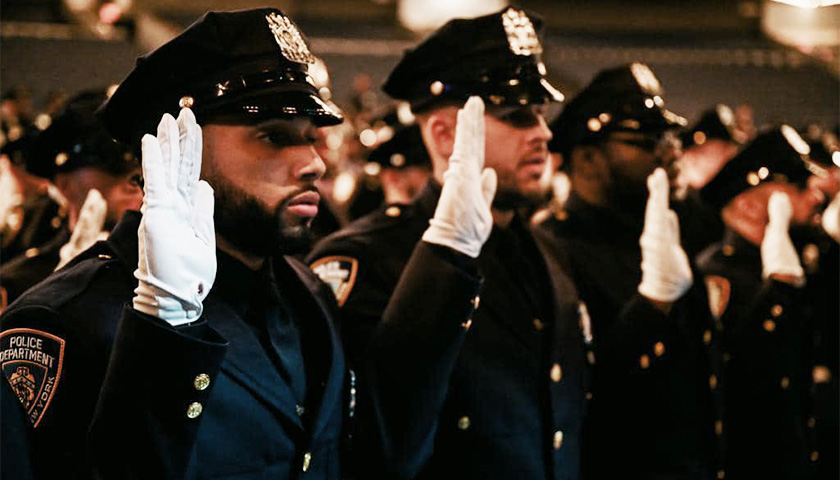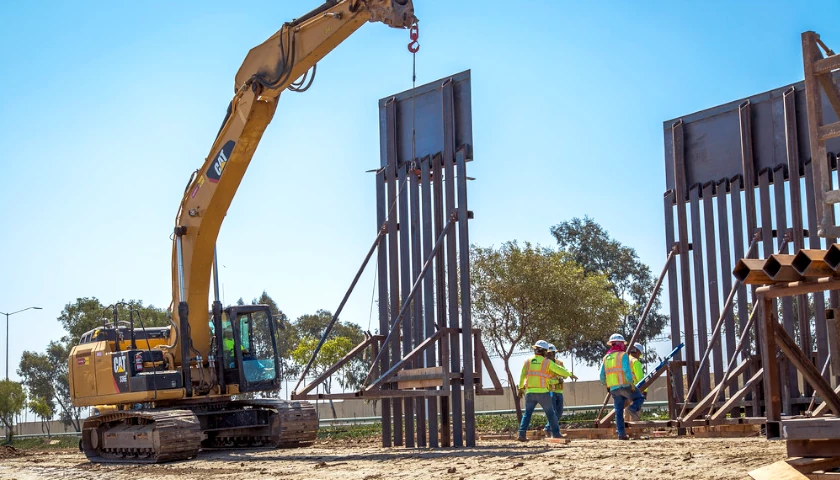by Edward Ring
On June 25, Joe Biden signed into law the “Bipartisan Safer Communities Act,” a gun control bill that sailed through the U.S. Congress in reaction to recent mass shootings. With another high-profile mass shooting on July 4, many politicians are already wondering if the new law went far enough. But “mass shootings,” the overwhelming majority of which are perpetrated by well-armed inner city gangs, are just one tragic element of an overall breakdown of law and order in the United States. Restoring law and order is possible without resorting to radical, reactionary measures. We need to reinstate policies that worked in the past and will work again.
An example of reactionary populism spinning into radical territory can be found in a recent American Greatness essay by the usually more measured Josiah Lippincott. In his May 22 essay, “America Should Bring Back Public Executions,” Lippincott proposes: “Every town square in every little town in America should have a gallows—a stark reminder of the power of the state to enforce order and decency. As a country, we need a heavy dose of reality to counteract the soporific effect of endless propaganda and life in the virtual world.”
The second half of Lippincott’s remarks ring true. A heavy dose of reality would deter crime at all levels, from mass murder and treason to vandalism and petty theft. Restoring swift and certain justice in the form of unpleasant consequences for unacceptable behavior is the obligation of a healthy society. Lippincott is justifiably outraged that we have renounced that obligation.
But the first half of Lippincott’s remarks are terrifying. The solution to America’s crime epidemic is not to make Americans terrified of the power of the state, by building gallows in “every town square” and resuming public executions.
In America today, reactionary populism is decried by the establishment media as a right-wing menace, but activists on the Left field armies of fanatics with numbers and institutional backing far more than whatever the so-called far-Right can muster. That is seen by comparing the scope, duration, violence, and prosecutions (or lack) caused by the George Floyd insurrectionists for several months in 2020 versus the isolated January 6, 2021 “insurrection” that lasted a few hours and never happened again.
The opportunistic exploitation of public unease isn’t necessarily restricted to getting ordinary crime under control. The definition of crime can be expanded, as can the severity of the sentences attendant to those crimes. Did a popular right-wing television commentator allegedly inspire a racist murder? If so, arrest the man. Did a well-known podcast host spend years influencing millions of people to question climate change, and if so, might he be liable for damages or even criminal prosecution after a series of tornadoes obliterate several towns in the Midwest?
Climate deniers. Election deniers. Science deniers. Insurrectionists. Aren’t these crimes of existential significance? Aren’t these people dangerous, treasonous fascists? Arrest them all.
Restoring Law and Order Doesn’t Require a Terror Regime
There are recent and compelling examples of how crime can be brought under control. During the mayoral tenures of Rudy Giuliani and his successor Michael Bloomberg, New York City was a relatively safe place. This was accomplished by scrupulously enforcing existing laws, and prosecuting even minor crimes such as turnstile jumping or spraying graffiti. Called “Broken Windows policing,” these policies were based on the theory that if you prosecute minor crimes, you instill respect for the law and deter major crimes.
Giuliani and Bloomberg also permitted the New York City police force to practice “stop and frisk,” where if the police officer “has a reasonable suspicion that an individual is armed, engaged, or about to be engaged, in criminal conduct, the officer may briefly stop and detain an individual for a pat-down search of outer clothing.”
These policies worked as long as they were in effect. But New York City today, like cities across America, is not safe. Before we demand gallows in the town squares, we should demand a return to Broken Windows policing and the practice of stop and frisk.
There’s much more we can do to get crime under control, merely by relying on tactics that worked in the past. John Litle, a former public prosecutor in Ohio, describes in a 2019 American Greatness essay how in the 1990s, big cities successfully fought “crack-fueled” gangs. Litle describes the steps taken to fight crack gangs back then:
When it comes to law enforcement and the courts, we actually already know how to defeat the opiate epidemic. We’ve done it before. We beat the crack epidemic. We drove out the violent insanity which was destroying Ohio neighborhoods and families. And we did that by utilizing the criminal courts to treat people who were caught committing crimes as criminals; by treating people who sold crack as violent poison-pushers, and by stemming the tide of drugs flowing into the country with concrete action, rather than spreading out a red carpet along all of our borders for drug cartels to bottom out the price of poison everywhere in the country.
Litle then explains the deterrent effect of these steps:
We don’t have crack houses all over the place anymore because we took the people who ran the crack houses and we put them in prison for so long that not only would the crack crisis have passed before they got out of prison, but everyone else was forced to stand up and take note of their sentence. Economics is economics. If you are actually going to attempt to ban a substance that has high demand, you must make the risk/reward calculus obvious and simple. The risk of apprehension multiplied by the likely punishment must exceed in value by orders of magnitude the anticipated reward in light of the alternative opportunities. And [to] make that message heard by all, a multiplication factor must be applied.
Some might call the war on drugs that Litle describes an overreaction. If so, the crime we cope with today results from overreacting in the opposite direction.
Perhaps before we resort to gallows and public executions, we might bring back these less extreme but proven policies. We might control our borders again, throw drug traffickers in prison again, bring back stop and frisk and broken windows policing, clear the drug-addled homeless off the streets and sober them up in cost-effective shelters, and recall the despicable gang of progressive prosecutors that play a key enabling role in the breakdown law and order in America today.
Implementing these policies might create quite enough of a deterrent to rampant crime, and would they not constitute a slide toward establishing a terror regime in this beautiful, free nation.
– – –
Edward Ring is a senior fellow of the Center for American Greatness. He is also is a contributing editor and senior fellow with the California Policy Center, which he co-founded in 2013 and served as its first president. Ring is the author of Fixing California: Abundance, Pragmatism, Optimism (2021) and The Abundance Choice: Our Fight for More Water in California (2022).
Photo “New York Police Department” by NYPD.




